Back in March 1998 I interviewed legendary underground German film-maker Jorg Buttgereit by phone for SFX.
His movie Der Todesking
was out on VHS - and he had also recently published a German book about his great love, Godzilla movies. I was only able to use part of the interview. This full version has never been seen before.I enjoyed Der Todesking but I didn't understand it. What was the idea behind it?"The reason why you didn't understand it maybe is that it's a combination of a lot of ideas, not just a basic idea. For us, it was very important to set ourselves free of
Nekromantik. The so-called horror audience was very pushy, and to top something like
Nekromantik is very hard, as you can imagine. So we wanted to do some different things and we tried to put them all into one movie. We didn't care a lot about convention. So we did a movie with all these suicidal people and with no main actor at all, which is a terrible thing normally. The main actor was kind of the rotting corpse that is seen between episodes.
"It's a more kind of arty approach. It had nothing to do with mainstream cinema and we didn't care about the commercial success or anything like that. We just set ourselves free after
Nekromantik because we were afraid of being a slave to our limited success. For this kind of movie,
Nekromantik was a big success. Of course, we didn't make a lot of money with it but it had so much coverage from everywhere. Everybody was keen to see what's coming next, and that's a terrible thing to be. It's like Tarantino after
Pulp Fiction: what is he doing? He's doing a very slo-o-ow movie. have you seen
Jackie Brown?"
Not yet."Nothing is happening in this movie! You can watch very boring things a few times, but if it were not for all the good actors, this movie would have been terrible. But he's stuffed it with great actors, so it's great. But it's also a very arty approach."
![]() Did you have any control over the English subtitling of Der Todesking?
Did you have any control over the English subtitling of Der Todesking?"It's hard to remember. I think someone did it for us, but we produced the subtitled version in the end."
It's very funny when a five-minute phone conversation is subtitled 'I quit'."That was my idea. I felt so stupid trying to translate all the stuff he was saying, and in the end the only fact was that he quit. We had this finished movie and we had the need to do subtitles, and it gives you even more ideas. So that was something strange! It was funny too. This guy is talking to his job and telling them that he quits and he will get his things later and he will get his tax stuff and everything. All this normal stuff, and I didn't find it very worthwhile to translate it. And it's a good twist. Just: 'I quit'. I've never seen these things before."
If you were trying to get away from Nekromantik, why did you then do Nekromantik 2?"It was not that we were actually going away from it. It was still about death and about corpses - though not corpse fucking. About the process of decaying. Our problem was that a mainly horror audience, who are always open-minded, which is good; they also just take you and tell you, 'You are now our horror hero.' And I thought that it could be dangerous. But if you have a look at
Nekromantik 2, it's a totally different movie than
Nekromantik. I found out later that - which is kind of a concept and seems to work - that this is a horror movie for women, maybe. Because it was shown at a women's film festival in Austria once. I think this was in '93. Even I wasn't allowed to go there just because I was a man; it was a strictly women only place. And it went down pretty well. Because out of context, it showed the whole movie from the point of view of a woman.
"Normally in those so-called general horror movies, you have women only in the movie to be victims. You need someone for the main guy to have sex with, or you can kill her or you can rape her. Normally, you only do bad things to women. We tried to do it the opposite way, to give a new impulse to the very sick horror genre. That was our intention. So I think
Nekromantik 2 is in a way the same as
Der Todesking in trying to get away from the bad things in horror movies. I'm not trying to say that horror movies are bad, I'm only trying to say that some horror movies are too stiff. For me, the meaning of a good horror movie is to broaden the horror. When you have science fiction stuff or horror stuff, you are able to do so many things. But normally, what the producers do is follow a certain concept that was successful one time, and that's starting to get boring."
![]() Clearly Nekromantik 2 had a lot of problems.
Clearly Nekromantik 2 had a lot of problems."It was a problem, but now it's free again."
When you were making the film, did you expect that much response?"Of course not. One of the drives behind the first
Nekromantik was to see how far you could go before something happens like this - and nothing happened. With
Der Todesking nothing happened also. So during
Nekromantik 2 I felt pretty safe. But it seems that by the time
Nekromantik 2 was released - it was at the end of the screening of
Nekromantik 2, half a year after it was released - that this thing happened in Munich. Munich is a special difficult town for films like that - or it has been, it's not any more. So this happened and nobody was really prepared for it."
Over here we have very strict censorship."Yes, that's the reason why only
Der Todesking is out.
Der Todesking is also in a slightly edited version."
What is censorship like in Germany?"For me, it's very hard to say because I would describe Germany as being as problematic as Great Britain because I had these bad experiences. But I had the same experiences in Great Britain too when I tried to screen
Nekromantik at a film festival in Manchester. In Glasgow they didn't allow me to get into the cinema, which was strange too. But that is okay by me, because the main problem with
Nekromantik 2 was that they really tried to destroy the negatives. And they tried to do this before there was a court decision. I had to prove that this film was art, which we successfully did in the end, but it took us two years. If we hadn't had any success, it would have cost us a lot of money too. In this case, the government had to pay for it because they made the mistake.
"That's also one of the strange things. Over here, normally there is no censorship; there is no censorship law. It's mainly the FSK, which is like the BBFC, and you have to get your film to them if you want to have certification under 18. But over here it's kind of free. On paper, it says 'Freiwillige Selbstkontrolle der Filmwirtschaft' - free self-control for film business. So I said, 'If it's free, I won't take it'. Then they had to think of something to put me away. So what they did is, they just said that I am doing something against the law because I am glorifying violence, which is a criminal act. So they made me a criminal man. I did something criminal, and if I'm doing a criminal act, then it is no art at all. If they make you a criminal, then they can do what they want, and that is what they were trying to do."
When a film is banned, does it become more popular among horror fans because they can't see it?"Yes, of course. The whole concept of censorship, the whole concept of freeing people from bad movies could be a whole commercial thing. I remember when I was young, films that had the '18' sign had more of a reputation. Like: this film is only a '12' rating, so don't bother going to see it. It was more attractive to young people, and censors should know this. That they are doing the best they can to promote the film, which is not their job, I think. On the other hand, it's kind of bad because it gives you a reputation for a certain theme, but you can't cash in on it because the film is not available to view. So it's really not getting you anywhere! It's a lot of hype, but no use. It's really depressing: sitting in your room, knowing that everybody wants to see your film but you're not allowed to give it to them. And that's one of the main reasons you are making films - to let them be screened in cinemas. But video gave a lot of freedom to some people. I think bootleggers were busy during that time."
Tell me about your early super-8 films like Interview with Frankenstein."That was kind of strange. I bought this camera, and on the same day I had this super-8 film which lasts 2.5 minutes. I just had this great Boris Karloff mask, I put it on my friend and we did this interview. I was interviewing him, and after 2.5 minutes it was over because Frankenstein is killing the interviewer! Normally I don't put these things into my filmography because it was just a film I showed sometimes to friends. There is not even a print, only the original is available. it was super-8, just the first 15 metres of film I ever exposed. That was going on for a while. I was shooting movies, showing them to friends, and then they showed them to other people. We built a super-8 cinema here in Berlin. When I was doing a new film, there was always a bigger bunch next time who wanted to see them. So it was always a very natural thing to just go on and on and on."
Did you learn things on the super-8 films that you could bring to the features?"Sure, of course. That's the education I got, because I was turned down from a Berlin film school in '87. And when they told me that they wouldn't take me, I made
Nekromantik as revenge. The funny thing is that the film school invited me, about eight years later, to do a lecture there. So I had the feeling that I did something wrong in the end. Because I didn't have any official education, but I just made movies and I just watched movies. While doing movies, you do all these mistakes and you learn a lot. It costs you some money, but it's okay. And my mistakes were funny enough for people to watch, so it was really no loss in the end. But my earlier films are much more funny, they are nothing compared to
Nekromantik."
Why have you moved away from funny, fantastical films?"That just happened. It's very strange. When I decided to do the first feature film on my own, it was just getting more serious. I don't exactly know why. Even today, I'm amazed how seriously people are taking
Nekromantik, because for me it doesn't work the same way, as you can imagine. I always see the things that are wrong in that movie, and there's a lot of wrong things going on. There was no script, and stuff like that. The plus point on the movie is that you can see that the guys that did the movie are very into it. That's something bigger budget movies don't have: this kind of insanity that they just go for the sake of it. It's a very rare thing, and it's even more rare today, I think, to have these things.
"I did this four times. I did four feature films with no money, and after a while you're just reaching your limit of what you can do with this kind of money, and what you can do artwise. My approach always was, and I hope this can be seen in the films, that I don't want to do straight-faced horror movies. It was more like letting people start to think, giving them a few stitches, so they feel the need to think about what they see. I know that a lot of hardcore horror fans that are very much into
Braindead and things like that get very bored by my horror films, because it takes a while before the things happen. It also takes a while before someone gets killed. After a while, it's not funny any more. I think it's mainly a natural approach I'm trying to get here, a fake documentary style to grab the people even more.
"And I never deal with any supernatural stuff, Like Romero for example. He did very great films but I think he was always best when he was doing realistic things. I very much prefer
Day of the Dead to
Dawn of the Dead because I think it's far more powerful. It's really not very fun after a while, and it should be like this. This gets me to the point where I always used to say that I don't think that I'm doing violent movies, because I don't think the violence is shown in a glorifying way or in a way that is letting you think that violence could be a solution or could be something harmless. I'm always trying to go for the real thing which is painful and very messy. That's why I'm always very pissed off when somebody, like in Germany, says that I'm glorifying violence and should be banned. If he wants to ban me, he needs another excuse! That's the problem."
There seems to be a recurring theme in your films of dicks being cut off."That's one of the easy taboos you can break - showing a dick. In
Nekromantik it's very obvious that there's a connection between life and death, or sex and death. The main character gets his last kicks out of his own death. The idea came from a book I read where someone who was an executioner was writing his diary. He wrote that when he hanged someone, during the moment of death those people get a last hard-on, and they even get a last climax. I don't know why. But here you have the same connection, and I thought, 'Well, I've never seen this in a movie.' It was a very naive approach I had, but I also had the feeling that it was something that should be on the screen because it has something in it.
"Later on, in the other movies, it was mainly the same: just dig deeper into the subject. What is sex all about? What is life and death all about? The funny thing after all this, is that this is the problem. My films are not very harmful to people in terms of glorifying violence or something like that; they are just dealing with things that normally people are trying to hide. They just don't want to think about those things, not in that straight way. Surprisingly enough, my main enemies who are fighting against me, these lawyers and people like that, they have never seen my films. That concept is part of the whole censorship thing over here: that people who are against it never care to watch the films."
Have you made a film since Schramm?"Not a feature film of my own, no. I wasn't really satisfied with the low budgets. It wasn't even low budget, it was really no-budget. And nobody got paid. I started to sit back and wait because what happens is that so many people like my movies, but there's nobody who wants to give money for them."
If somebody did come up with the money, do you have something you want to make?"I have three scripts lying around. Once in a while, I approach a possible producer. They mainly like it, but it's not mainstream enough for them. So the things I did after
Schramm were mainly music videos and I did special effects supervision on
The Killer Condom. Then I did, although it has not been finished, another special effects job on a movie that will be done later this year for a guy who is one of the last independent film-makers over here. Right now, I'm starting to produce one episode of
Lexx, which is starting to get busy."
Are these people who know your work?"Yes, even the producer of
Lexx, the guy who gave life to the whole
Lexx project, Paul Donovan from Canada. I met him in Spain at a film festival and he saw my movies and he was totally amazed. But it was very hard for him to convince German producers who put money into the whole
Lexx thing to get me for the job. Everybody in Germany is afraid of me because they don't want to be banned. So during the first season, they really pushed me away. Paul Donovan the producer was totally pissed off by that. So now that it's more successful, he wasn't very satisfied with everything, so he can now order me into the series. He's having more freedom now, because last time the Germans decided, this time the Canadians decide.
"But it's hard to say how much input I really can have into the thing because it's a limited thing. I think they are making 20 more episodes, and I am the creative producer on one episode, and I have the option of doing one or two as a director later on in Canada. But I don't know if I'm happy with it because it's a mainstream thing and I don't know how far I can go on TV. The things I did for TV in Germany until now are mainly documentaries. Documentaries about pathologists and stuff that is interesting me anyway. That's something which you can do in Germany on the documentary side. I did two or three TV documentaries, short ones, but only one has been screened by now. Also some video clips, and last year I wrote a book about Godzilla movies, which hasn't got much to do with my own movies. I think that's also one of the chances of the
Lexx thing, to put my early '60s Godzilla fashion onto the screen too. Having something to do with science fiction, it's just an easy field where I find myself very comfortable. I don't have to push myself to go to work, when working on
Lexx. Even if I don't think I can turn the whole series upside-down."
What do you do as creative producer?"It's not quite sure at the moment because I'm just starting next week. What I'm doing now is just picking actors together with the producers. It's a German-Canadian co-production. I tell them which actors are cool and which actors are not cool! These type of things. It's hard to say how it will develop because I just started."
![]() What do you know about Xenia Seeberg?
What do you know about Xenia Seeberg?"I told the producer about her. She's kind of famous from a very cheesy nursing soap opera, called
Geliebte Schwestern - 'lovely nurses'! I tried to watch it once, but it was terrible! But the producer asked me to name a babe and I guess that's what she is. She will be starting in episode three. I'm producing episode five, so I have to work with her. But I won't meet her until next month. But I guess shes quite good for the role."
Tell me about working on Killer Condom. Was it a big film in Germany?"By German standards, it's quite big. The money came from Switzerland, because it's a done by a guy called Irwin C Dietrich, who's the main force, the main money man in the background. He used to do films with Jess Franco and all these sleazy exploitation things, '70s horror movies."
What was HR Giger's involvement with the film? "The problem with Giger was that he just came too late to the whole project. So we were trying to push him over to the art department, but it was too late also. He did something here and there but his involvement was not a lot."
Was he happy with his credit staying on Killer Condom."If I were him, I wouldn't have been happy. But the director Martin Walz told me that after the premiere, he told him that he very much liked the film, even if there was nothing of his in the movie, and that's a good sign, I guess. During the production he was kind of angry and I had the feeling that he was right. Because they mainly did try to cash in on his name, which isn't fair because he's doing great things. For me, it was okay. I met him and I gave him some of my films and he liked them very much. At the end, he also offered me a project, and we were trying to get money for a project for the both of us. It's a concept based on a castration machine that he designed. We built a story around that and we tried to get money for it which didn't work out yet. When I talked to one of the producers from
Lexx, there was talk of maybe including this concept in one of the
Lexx episodes but I don't want to spoil my own movie."
Is Giger working on Lexx?"I don't think so. Giger was planned. The plan was that, because I worked with him - he really is an artist, and as an artist he really is not very easy to work with. So the idea was that if Giger is involved I should do one of these episodes. But I think they decided not to use him because they move so fast now that they simply can't put everything in place with him. It would be like in
Condom, it wouldn't be the real thing in the end."
He's very annoyed about Species 2 using his name and only using his designs for about eight seconds."He should get used to this by now! I think in generally he's just pissed off - and he's right - at how the film industry is dealing with him. But what can you do? He needs to have more impact, more power on a movie. But to have more power on a movie you have to be more bankable, but now he's treated as someone who's not very easy to work with. It's a shame. But all the concepts he's doing, he's not thinking in a money way. He's having some ideas, but most of the time the line producers get heart attacks because its just too expensive. That's also one of the problems with the project we had written. On the one hand it was too extreme, and on the other hand it was too expensive. I haven't spoken to him in quite a while because it's just not happening and I'm always busy with video clips or whatever. And there are these two other projects I would like to do too. I can't even get money for those - and they are cheap! It's just very, very complicated to get money for unusual films."
Would you be better moving to America?"It's hard to say. I met Quentin Tarantino once at a film festival at Sitges and I gave him the story outline of that Giger project. He seemed to be interested, but I've never heard from him again. But he's busy enough with his own movies. My experience was that in America it's even more difficult to get unusual stuff done because they only care about the profits. I don't care about profits that much. I care about it in a way, because otherwise you can't do it. Doing films is so expensive, it has to be commercial - but people don't treat me like I'm doing commercial movies. If you compare my movies to bigger ones, then a film like
Nekromantik is commercially very successful because it made its money back very fast. Not because it was such a big seller, but because it was so cheap!
"So in a certain scene I'm very commercial, but people can't put that into a bigger context, that's the problem. The German producers are not used to trying to get their money back from the rest of the world. They always try to get their money back inside Germany, which is pointless. I didn't make the money for my films in Germany. It all came from the sales to Japan or to Spain or to France. If I had kept on selling my films only in Germany, then I would be dead by now, I think!"
Finally, tell me about your interest in Godzilla."The Godzilla movies were the first movies I saw, and it always sticks to you. For as long as I can remember, I'm going to cinemas to watch Godzilla movies. In the late '60s I started when I was four or five years old - and it just never stopped. So when I heard that Roland Emmerich - our German Roland Emmerich - is doing a Godzilla movie now, I felt that it was time at least to do a book about those films over here in Germany. Because in Germany there's no literature about science fiction films, there's no literature about Japanese monster movies. The book I've written is mostly about Japanese monster movies, not only Godzilla but also the Gamera movies and so on. It's stuffed with 50 movies and it went down really well. It just came out three weeks ago and I did some promotional screenings with old Godzilla movies in Munich and Berlin and Hamburg. It went pretty well, so I hope at least the old Godzilla fans will grab the book. Maybe we might even get it to other countries."
Are the Godzilla films very popular in Germany?"It's hard to say. People know who Godzilla is, but they laugh about it. Even the so-called serious film critics don't even bother watching them carefully. So my approach was getting the reputation of Godzilla in a better way out to the people. Because as film history they have so many things to offer that American monster movies don't have. This naive way of approaching the whole thing. They don't pretend to be realistic; they don't care about it. They just care about looking great! That whole concept. As a child of course, you are very attracted to large things that do what they want, because as a kid you are not allowed to do what you want. And that's what you want to do: you want to run around and smash everything. That's, I think, part of the concept why everybody is happy with Godzilla movies. All the metaphorical meaning in Japan is totally different; you really have to keep that in mind if you watch those movies to understand them."
![]()
"I think one of the reasons is that the Japanese did a film, which the American title was
Frankenstein Conquers the World. That's where they really took the Frankenstein monster and put it into a Japanese context. That movie is the only one where Hiroshima actually happens on screen. That film came out quite early in Germany. Afterwards, they just tried to cash in on that Frankenstein name because Godzilla wasn't such a name in the late '60s and early '70s. So they just put 'Frankenstein' on everything - which is embarrassing! So if you have a movie like
Godzilla Vs the Smog Monster, which is one of my favourites, in Germany the title translates as '
Frankenstein Vs the Devil-Monsters'. Which is even more strange than the film! That's very bad, but there is lots of good posters and artwork over here, and the book is stuffed with this kind of thing."
Did the 1990s Godzilla films come out in Germany?"One small distributor was trying to get
Godzilla Vs King Ghidorah out in the cinemas, but after two months the distributor went bankrupt. I don't know if that was a good or bad thing! So it was mainly straight to video, far more than you have in Britain. The thing is that after 1993 Toho didn't sell the world rights of the later movies because they were waiting for the American movie to be released, then they can make even more money. That's the idea; they don't want to spoil the market for the American production. Older films like
Godzilla Vs the Smog Monster have also disappeared over here. I can still get hold of one 35mm print, and I screened it two weeks ago in East Berlin at the book presentation, but officially it's not available any more. I just got a list of DVDs from the US that are coming out.
King Kong Vs Godzilla is announced for May. It's mainly the same thing that they put out in America all the time:
Godzilla, King of the Monsters, the Raymond Burr version;
Godzilla Vs Mothra, the '64 version;
Godzilla's Revenge,
Terror of Mechagodzilla and
Monster Zero. Which is great, but you have
Monster Zero also."
These films have far too many titles."That's also one part of the book: a whole film index. The German, British, American and Japanese titles are all in there."
![]() Have the recent Gamera films come out in Germany?
Have the recent Gamera films come out in Germany?"Only the first one,
Guardian of the Universe. But after a while, I just started getting the laserdiscs from Japan. Far more satisfying. And now that DVD is getting further, it will be a new challenge to get those films in better versions. You have standard and widescreen versions, you have production notes, you have remastered sound and picture quality: all those things that are necessary! Warners are doing a great job. If you watch
Mars Attacks!, it's really mind-blowing. You have freeze-frames as clear as photos."
website: www.joergbuttgereit.com
![]() Suzanne also brings aboard a cat which she has rescued from a dockside trash can. Also on the boat is henchman Albert (Clu Gulager: Return of the Living Dead, Nightmare on Elm Street II) plus Rachel (Dirk Benedict’s then-wife Toni Hudson: Texas Chainsaw Massacre III), the boat’s captain whose father once owned the vessel.
Suzanne also brings aboard a cat which she has rescued from a dockside trash can. Also on the boat is henchman Albert (Clu Gulager: Return of the Living Dead, Nightmare on Elm Street II) plus Rachel (Dirk Benedict’s then-wife Toni Hudson: Texas Chainsaw Massacre III), the boat’s captain whose father once owned the vessel. Suzanne also brings aboard a cat which she has rescued from a dockside trash can. Also on the boat is henchman Albert (Clu Gulager: Return of the Living Dead, Nightmare on Elm Street II) plus Rachel (Dirk Benedict’s then-wife Toni Hudson: Texas Chainsaw Massacre III), the boat’s captain whose father once owned the vessel.
Suzanne also brings aboard a cat which she has rescued from a dockside trash can. Also on the boat is henchman Albert (Clu Gulager: Return of the Living Dead, Nightmare on Elm Street II) plus Rachel (Dirk Benedict’s then-wife Toni Hudson: Texas Chainsaw Massacre III), the boat’s captain whose father once owned the vessel.
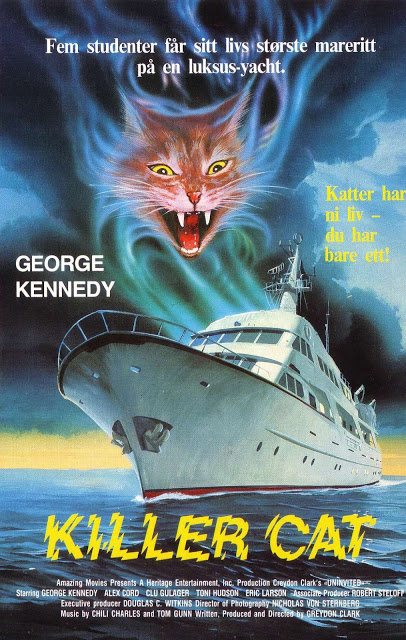












.jpg)











.jpg)
























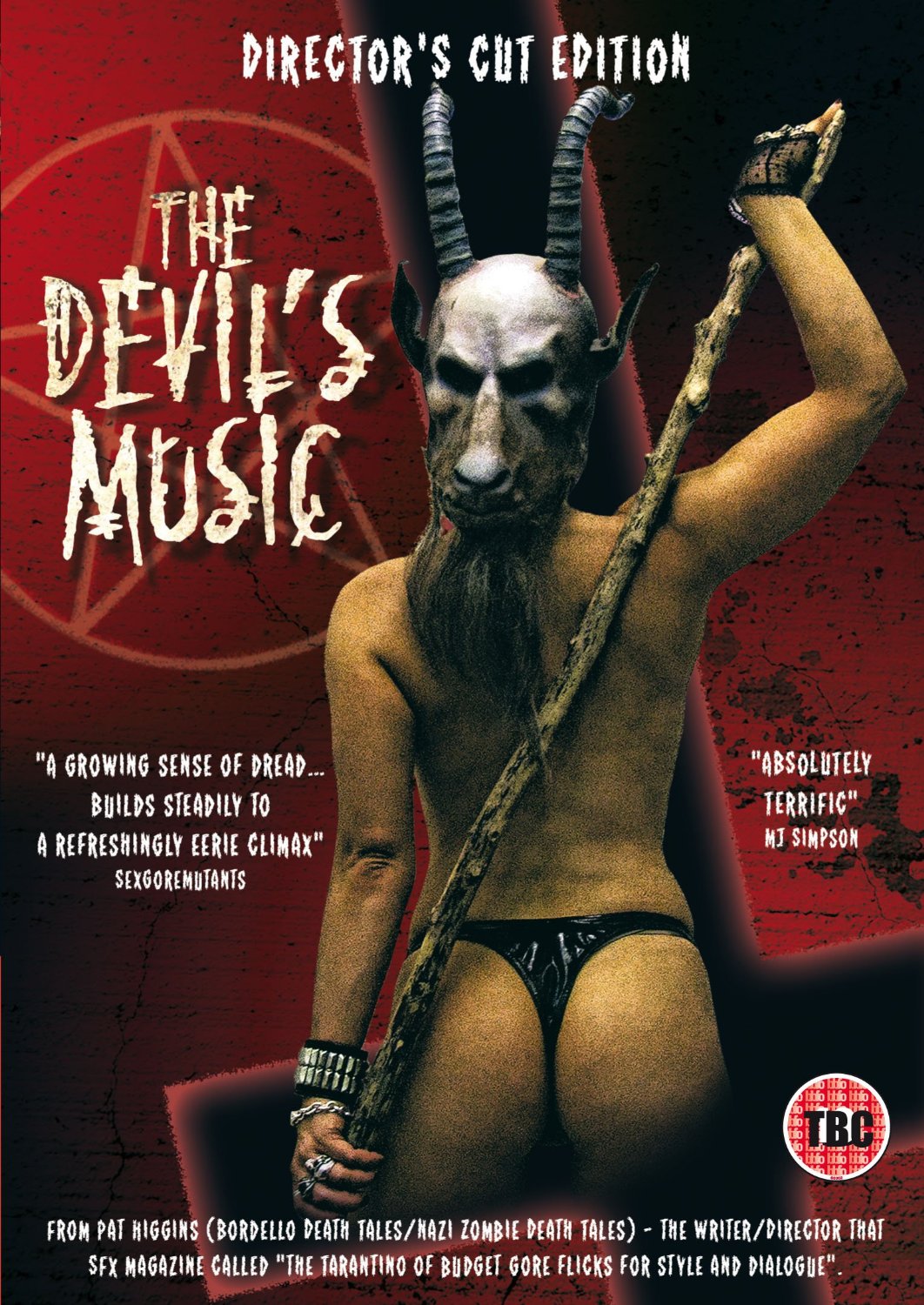


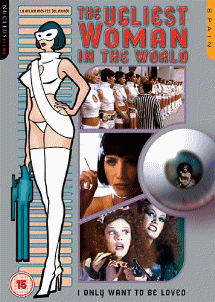


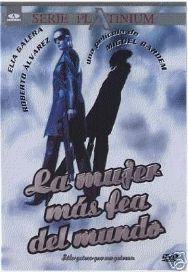































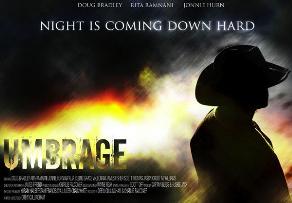


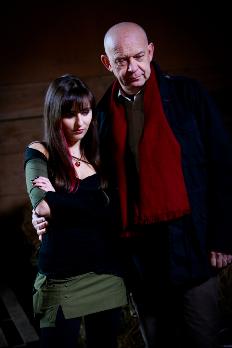








.jpg)